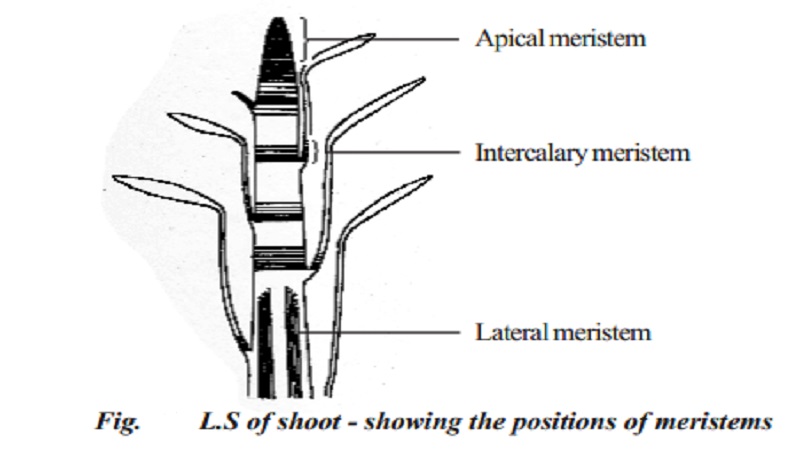Chapter: 11 th 12th std standard Bio Botany plant tree Biology Higher secondary school College Notes
Classification and Characteristics of meristematic cells

Tissues and tissue systems
The study of internal structure of plants reveals many types of tissues. Morphologically, a tissue is a group of cells, which are similar in origin, form and function. Physiologically, a tissue is composed of dissimilar cells that perform a common function, for example, phloem elements and food conduction respectively. The cells form various kinds of tissues. Two or more types of tissues form tissue systems. Different tissue systems form the organs. Each tissue carries out a specific function. Tissues can be classified into two types - Meristematic tissue and permanent tissue.
Meristematic tissue
A meristematic tissue (meristos = divisible) is a group of identical cells that are in a continuous state of division. Some cells produced by meristematic tissue stop dividing and acquire certain changes to become permanent tissues of the plant. This change from meristematic to permanent tissue is called differentiation. The remaining cells in the meristem retain their meristematic activity. Meristematic cells are self-perpetuating.
Characteristics of meristematic cells
The meristematic cells may be round, oval, polygonal or rectangular in shape. They are closely arranged without intercellular spaces. They have dense cytoplasm with large nucleus. They have smaller vacuoles, which are scattered throughout the cytoplasm. Their cell walls are thin, elastic and made up of cellulose.
Classification of meristem
Based on its position, the meristem is divided into three types - apical meristem, intercalary meristem and lateral meristem.
Apical meristem
Apical meristem is found at the tips of roots, stem and branches. It is responsible for increase in length of plant. It is divided into three zones - protoderm, procambium and ground meristem. Protoderm gives rise to epidermal tissue; procambium gives rise to primary vascular tissues and ground meristem gives rise to cortex and pith.
Intercalary meristem
It is present in the nodal region and is prominently found in monocotyledons, eg. grasses. As the name indicates, it is present in between the permanent tissues. It is derived from the apical meristem and is responsible for the elongation of internodes.
Lateral meristem
The meristem that is present along the longitudinal axis of stem and root is called lateral meristem. Vascular cambium and cork cambium (phellogen) are examples for lateral meristem. It produces secondary permanent tissues, which result in the thickening of stem and root.
Related Topics